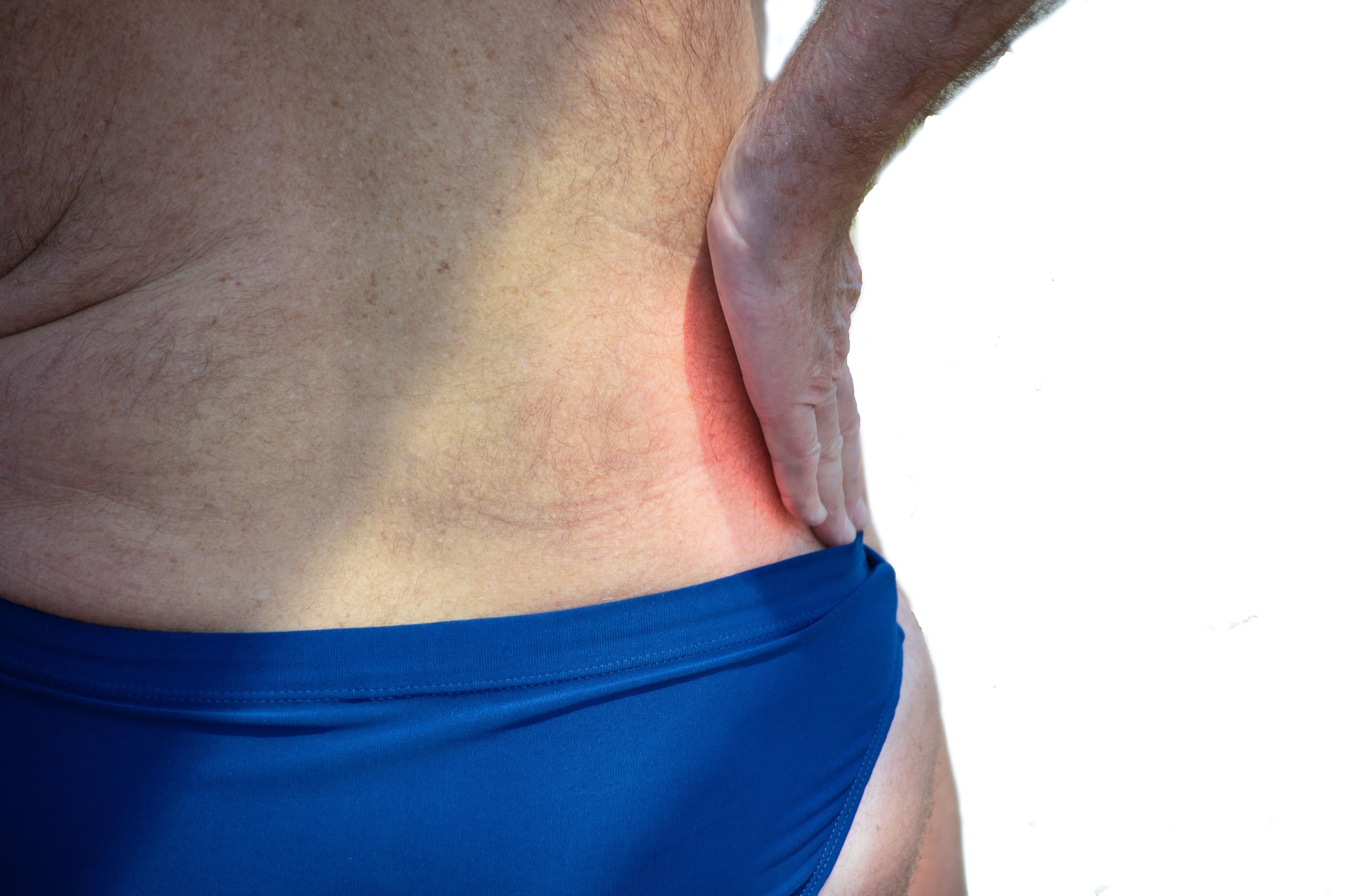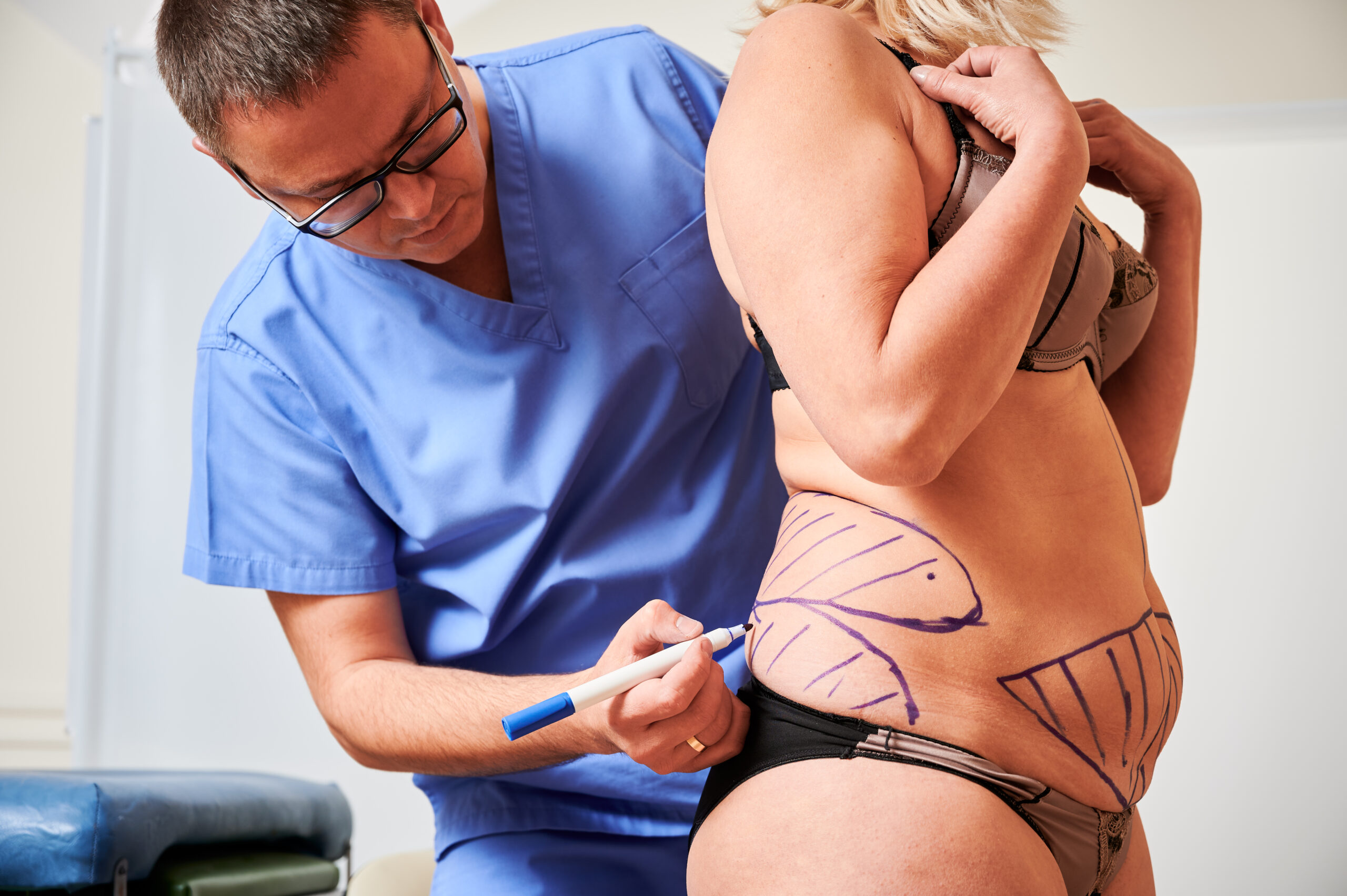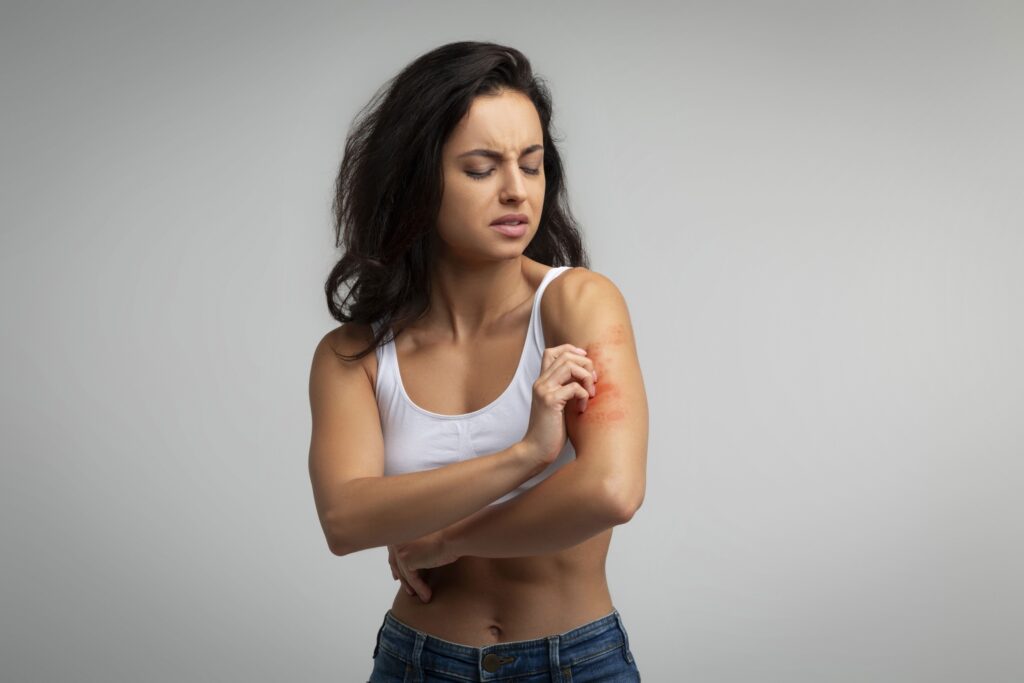BodyTite has been gaining popularity for removing fat and tightening skin, but is it really safe?
Lauded for being a minimally invasive and cutting-edge option, BodyTite is a very safe and effective procedure that can contract skin by up to 40%. Due to tiny incisions, local anesthesia, and top-tech features, it’s also safer than more invasive procedures like liposuction and tummy tuck.
But like any medical procedure, it does come with side effects and potential risks, even if the intensity and complication rate are generally minuscule. It’s important to be aware of all the risk factors. It’s your body, so make sure you’re well-informed before making any decisions!
Reputable clinics like GTAesthetic are committed to ensuring that patients are thoroughly educated and receive the best procedure and care, ensuring a seamless and safe journey to body goals. In this article, we’ll share everything you need to know about the risks and how they’re generally mitigated!
Common Side Effects of BodyTite
The following are the side effects that are commonly observed after BodyTite. These are generally not concerning and subside after one to a few weeks.
Swelling and Bruising
Moderate swelling and bruising are common after the procedure. This generally subsides in 1 week or so. It’s recommended to apply cold compresses over the elevated areas and keep them elevated. In addition, ensure to always wear compression garments as suggested by your surgeon.
Pain
Generally, the procedure itself is pretty much pain-free thanks to sedation or local anesthesia. After it wears off, you may experience mild to moderate pain and discomfort. To address this, your practitioner will prescribe you over-the-counter pain medications. The pain will eventually subside on its own, generally within a few weeks.
Numbness and Tingling
Nerve irritation may cause some tingling and numbness in the area for a few weeks. It’s important to avoid applying pressure on the area. If the practitioner suggests, do a gentle massage to ease up the sensation.
Scarring
The scarring formed due to BodyTite tends to be very hard to notice and fades over time. This is due to the incisions required for BodyTite being very small. It’s recommended to avoid sun exposure and take proper care of wounds to ensure a smooth healing of the scars.
Skin Irregularities
Skin irregularities such as lumps and uneven surfaces may occur, but they’re usually not a cause for concern. These tend to be temporary and subside over time. Wear your compression garments as instructed by your practitioner, as they support the healing that leads to desired harmonious results.
Rare but Potential Risks
Serious risks tend to be very rare with BodyTite, which decrease all the more within the hands of an experienced practitioner.

Infection
Like any surgery, there’s a risk of bacterial or fungal infection. By ensuring to follow the post-procedure instructions and hygiene and cleaning instructions, you can mitigate these risks.
This may include daily washing and drying of your compression garments. In addition, you should run soapy water over the area. These measures are generally safe to be done 48 hours after the procedure.
Pools and baths are recommended to be avoided to prevent infection of the incisions.
Allergic Reaction
In some cases, patients may be allergic to the materials used during the procedure. It’s vital to disclose your allergies and sensitivities to the practitioner to ensure a safe procedure.
Seroma
Seroma, a pocked of accumulated clear fluid, is possible but uncommon. Draining fluid and wearing compression garments as recommended by the practitioner alleviate this.
Thermal Injury
Thermal injuries can occur as the skin and tissues are heated with the device to break down fat cells and tighten the skin. However, the device is equipped with top cutting-edge features to prevent this, including the following:
- Silicone-coated electrode with cap: Skin-penetrating electrode fully coated with silicone and capped to prevent thermal dispersion.
- Focused RF energy: Rapidly transfers energy between internal and external electrodes, concentrating heat near the tip for safety.
- Rapid temperature monitoring: Sensors measure skin and fat temperatures every millisecond, displaying real-time readings on the BodyTite workstation. Auto-cutoff prevents thermal injuries.
- Contact sensing technology: Detects skin contact with the external electrode, halting RF energy if contact is lost to prevent excessive heat in the internal electrode.
Factors Influencing Risk Levels
It’s important to be aware of the factors that exacerbate the risk potential to make informed decisions and measures for your safe procedure.
Patient Health
- Medical conditions: Patients with certain medical conditions can be at higher risk of complications, such as diabetes, cardiovascular compromise, immune system compromise, etc. These can disrupt the body’s ability to heal properly from the procedure. The practitioner will assess your eligibility and safety for the procedure carefully based on being informed of your medical state.
- Medications: In addition, certain medications such as blood thinners should be avoided near or after the procedure. The practitioner will guide you accordingly when to stop the medications if it aligns with your health and when to start taking them again safely.
- Allergens: Certain materials used during the treatment can be potential allergens, such as the local anesthesia solution. The practitioner will ask about your allergies, so make sure to disclose them and any sensitivities.
Procedure Complexity
- Target areas: Large and complex areas open the doors for taking more time and raise the potential for more complications compared to the smaller ones, e.g., abdomen. Done with the right technique, though, the procedure is safe regardless of the area.
- Combined procedures: Combining the procedure with another one like liposuction adds to the complexity and requires more finesse from the practitioner. Combining procedures is carefully considered and discussed with the patient.
Practitioner Expertise
- Training and qualification: The practitioner’s training and qualification are greatly essential. Board-certified plastic surgeons or dermatologists with specific training in cosmetic procedures are adept at effectively handling the procedure.
- Experience: Not all qualified practitioners are built the same. Their extensive experience and successful track record matter greatly in shaping a successful procedure.
Minimizing Risks: Best Practices
To minimize the risks, make sure to choose the practitioner with thorough research and follow their instructions.
Carefully Choose the Practioner
The research for the right practitioner is crucial. Ensure that they’re certified and trustworthy with a successful track record.
- Read the patients’ reviews on Google, Yelp, TrustPilot, etc.
- Check their before-and-after portfolio. This will let you observe and assess the patients’ results from the practitioner’s treatment.
- Verify the practitioner’s qualifications and experience. This includes medical degrees and BodyTite-related certifications.
- The practitioner having certification issued by an authoritative body, e.g., InMode, is always a good sign of their excellent services.
Follow the pre-procedure guidelines
As mentioned before, medical factors are highly crucial in a successful and safe procedure. The practitioners provide each patient with a personalized plan with the precautions and measures stated.
Generally, the patients would be asked to avoid the following prior to the procedure:
- Strenuous activities concerning the target area.
- Smoking and alcohol.
- Prolonged exposure to the sun on the target area.
- Blood thinners.
- Anticoagulants.
- Vitamins.
- Topical agents.
You may also be asked to complete a full course of prescribed antibiotic medicines and pain medications.
Post-Procedure
Caution remains paramount after the procedure. Always follow the practitioner’s instructions and promptly get in touch with them should you notice any concerning signs.
The instructions would likely include the following:
- Have someone stay with you for at least the first 24 hours after the procedure
- Get ample rest
- Clean the area with soapy water, avoiding scrubbing
- Launder garments nightly and put them on promptly
- Take prescribed pain medications
- Avoid applying ice or heat
- Prioritize rest and avoid strenuous activities
- Maintain a protein-rich diet
- Stay hydrated
- Limit carbohydrates
- Refrain from smoking and alcohol
- Avoid hot tub baths and swimming to prevent incision infection
- Steer clear of sunlight exposure
- Walk lightly for improved blood circulation
Comparing Risks with Traditional Liposuction
BodyTite is notably safer than traditional liposuction thanks to being minimally invasive.

| Risk Category | BodyTite | Liposuction |
| Procedure Type | Minimally invasive | Invasive |
| Anesthesia | Local anesthesia with or without sedation | General or local anesthesia |
| Incisions | Small incisions (1-2 mm) | Larger incisions (3-5 mm) |
| Risk of Infection | Lower risk due to smaller incisions | Higher risk due to larger incisions |
| Bruising and Swelling | Typically less than traditional liposuction | Moderate to significant |
| Scarring | Minimal scarring, often barely noticeable | Noticeable scars, though minimized over time |
| Pain and Discomfort | Generally less pain and discomfort | Moderate to significant discomfort |
| Burns | Minimal risk of burns | No risk of burns |
| Contour Irregularities | Less likely due to controlled energy procedure | May occur, but skill and experience of the surgeon play a significant role |
| Fluid Imbalance | Lower risk due to controlled energy procedure | Possible, but careful monitoring and management can reduce the risk |
| Seroma Formation | Lower risk due to coagulation of blood vessels | Possible, may require drainage |
Conclusion: Making an Informed Decision
BodyTite is a highly safe and effective procedure, especially compared to traditional procedures like liposuction. However, there are potential common side effects and rare risks you should know about.
Common side effects are temporary and include swelling, bruising, numbness, tingling, and skin irregularities. But there are also rare and more serious complications like infection, thermal injuries, allergic reactions, or seroma. Understanding these risks is key to making an informed decision.
Reputable clinics, such as GTAesthetic, prioritize patient education and empowerment, guiding the patients through the process for the best results. Remember to choose a certified practitioner, follow pre- and post-procedure guidelines, and compare risks with traditional liposuction.
Ready to start a safe and transformative journey towards your body contour goals? Then get in touch with us now! Possessing 27 years of expertise with aesthetic applications, such as BodyTite, we are highly acknowledged for our expertise and have garnered numerous accolades, including the prestigious certification as an InMode Expert Center by InMode.
FAQ Related to Potential Risks and Side Effects of BodyTite
What are the most common side effects after a BodyTite procedure?
BodyTite is a highly safe procedure. Its common side effects are generally non-concerning and temporary which include swelling, bruising, numbness, tingling, and skin irregularities.
More serious but very rare complications include infection, thermal injuries, allergic reactions, or seroma. Their risk is highly minuscule with an experienced practitioner.
How long do BodyTite side effects typically last?
Swelling, bruising, pain, tingling, and numbness generally subside from a few weeks to a few months.
Are there any long-term risks associated with BodyTite?
There’s the risk of infection, thermal injuries, allergic reactions, or seroma. However, with the right practitioner and care, their potential is highly unlikely.
Can BodyTite cause burns or scarring?
The BodyTite technology is equipped with various top-tech features to prevent burning, by allowing the practitioner to have high control over the energy and heat. Hence, thermal injuries are very rare.
The incisions required are very small, ranging from 1-3 mm, which makes the scarring very unnoticeable. The scars completely fade over time.
How does patient health impact the risks of BodyTite?
Certain health conditions, medications, and allergies can increase the risks of the procedure. Make sure to disclose your health and lifestyle to the practitioner so that your suitability can be determined.
What steps can I take to minimize risks and side effects with BodyTite?
Your practitioner will provide you with the pre- and post-procedure guidelines, which include getting ample rest, wearing compression garments, proper wound care, and more. Make sure to always adhere to these instructions.
How does the expertise of the practitioner affect the risks of BodyTite?
Seasoned practitioners have in-depth knowledge of the procedure and are adept at performing it successfully and safely. It’s crucial to choose practitioners who have a proven successful record.
What should I do if I experience unusual symptoms after a BodyTite procedure?
If you have troubling symptoms or have any concerns, promptly reach out to your practitioner. They can provide guidance on the necessary steps to take.

